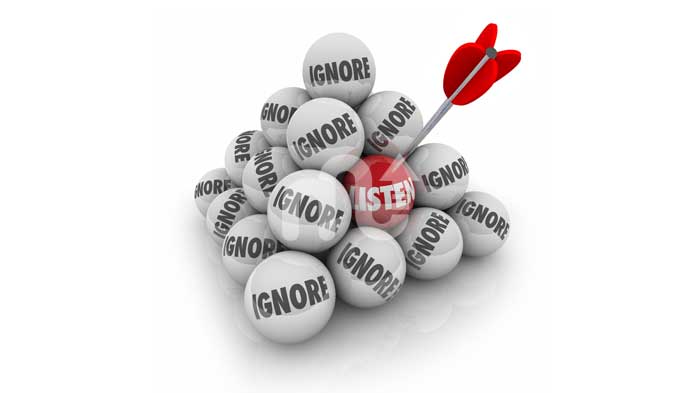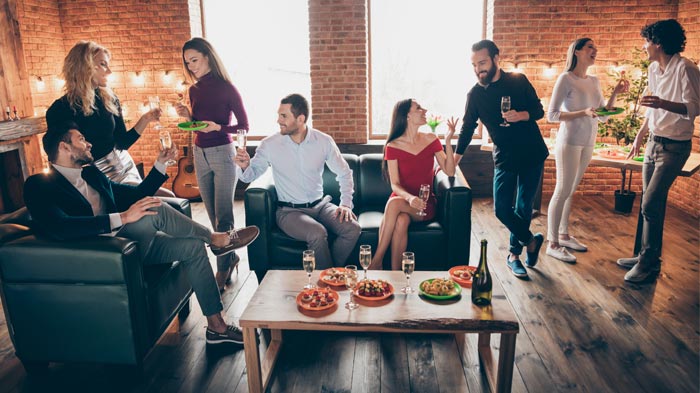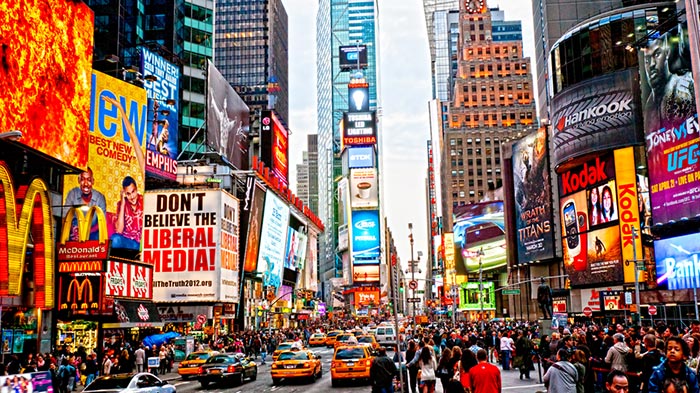When we focus our attention on anything, we actually choose to ignore many things. For example, imagine going to a bookstore. There is a specific book you want to buy, and you are walking between the bookshelves to find that book.
Perhaps you are passing through hundreds of books without actually noticing any of them. On the other hand, your eyes actually see all of them and possibly record them deep into your mind, but you don't even realize it. This here is a great selective attention example.
Now that you have an understanding of the concept, we can go over the selective attention definition.
What is Selective Attention?
If we need to define selective attention, we can call it the process of focusing on a particular object in the environment for a certain period of time. Our attention is limited. So to use this limited resource, we need selective attention, which allows us to ignore details that are not important.
If you want to realize all the details around you and focus on what you want, MentalUP’s brain-boosting games are just for you. Don’t forget powerful attention skills support kids’ school grades and help adults to be more successful in their daily lives. 🏆
Improving your selective attentiveness will provide you to achieve great results in high-concentration activities and stay ahead of the game. More than 10+ million users improve their attention skills with gamified attention exercises on MentalUP. 🎮

💡 TIP: Do you wondering that how your mind focuses actually? Our minds have four types of attention. You can dive deep and have more information to have a more powerful mind with this article!
Examples of Selective Attention
Cocktail Party Effect
As we’ve mentioned before, although there are many stimuli around in crowded and noisy environments such as parties, our brain selects certain stimuli and focuses on them.

The Monkey Business
As in the most famous selective attention test, “Gorilla Business” that we’ll mention further on in our article, if you have a specific target to focus on, your brain just follows your target. So it doesn’t notice any other unusual stimuli. Here is a version of Gorilla Business:
Visual Selective Attention
Perhaps we are exposed to millions of ads every day on the way to work or on the road. We don't even realize that we've seen many of these. But some, on the other hand, manage to attract our attention, especially if they address our current needs or taste. This shows that these advertisements have reached contacted with us as a stimulus by going through our selective perception.

MentalUP Attention Games Application helps you to strengthen many mental activities from visual intelligence to mathematical intelligence. Evolving mental activities allow you to focus better and keep your attention span much widerlonger.
Selective Attention Test
In the Invisible Gorilla experiment conducted by Simons and Chabris in 1999, a video is shown to the participants. In the video, two separate groups of people, one in black shirts and the other in white shirts, pass the ball to each other. Participants are told to count the number of times the players in white shirts passed the ball.
In the middle of the game, a gorilla enters the screen. He walks through the players, stands in the middle, hits his chest, then walks off the screen again.
"Did you see the Gorilla?" At the end of the video, when asked, it turns out that more than half of the subjects did not even notice the gorilla.
Based on this experiment, it is possible to say that we missed most of what is happening around us and that we have no idea about all these events and stimuli that we missed before we even realized.
How Does Selective Attention Work?
The term “cocktail party effect” is also used to describe selective attention psychology, especially in the Memory Selection Model. Because while we're at a party, there are many things that can distract us like music, light, and many other people talking. However, we can still focus on one conversation with a close friend. On the other hand, when our name is called among all the intense stimuli in this background, this will grab our attention.
So which of the following is the reason for human attention being selective?
It is proven that the capacity of our brains to take care of everything around us is very limited, so it is impossible for us to pay attention to each of these sensory experiences. Therefore, while our brain focuses our attention on some important elements of our environment, it puts all other stimuli in the background.
Theories of Selective Attention
In cognitive psychology, there is more than one selective attention theory, which is focused on when our brains react and interact with stimulating information from outside.

Broadbent Filter Model
This model was defined by Donald Broadbent in 1958. He used a filtering metaphor of information processing to describe attention. Broadbent suggested that our filtering of information occurs early on in the perceptual process. Physical characteristics like colours, loudness or direction of the stimulants processed before were used to select or reject a stimulus in later operations.

Treisman’s Attenuation Theory
Treisman proposed in his selective attention theory that instead of the filtering method specified by Broadbent's model, attention works by using an attenuator that defines a stimulant based on physical properties or meaning.
You can think of the attenuator as a controller or selective filters. You can mute other stimulus sources to join a single stimulus. Although the intensity of other stimuli is low, they still exist.

Memory Selection Models
According to the Memory Selection Model, the stimuli that we will pay attention to and the stimuli that we will not pay attention to pass through the first filter. It is then ranked in the second stage according to the actual meaning of the message content. Stimulants, which attract our attention by passing through the meaning criteria are transferred to short-term memory.
Resource Theories of Selective Attention
More recent theories suggest that human attention can interact with limited stimuli and tends to explain how these resources are divided among competing stimuli. Hence, source theories appear to be a much more effective metaphor to explain the phenomenon of attention divided into complex stimuli and tasks.
ADHD and Selective Attention
ADHD and selective attention are closely related as parents of children with ADHD notice that their kids hesitate and don’t give their attention to complete tasks such as homework or chores while spending hours after hours focused on other fun and enjoyable activities.
This situation leads parents to assume that their children are willfully delaying harder tasks or avoiding their responsibilities as they don’t have a full understanding of why their children can focus on one activity and not another.
Children with ADHD can focus more easily on activities that they enjoy because they provide more stimulation for their brains. For instance, computer games provide increased auditory and visual stimulation which are elements that are attractive to children with ADHD as their brains meet all of their stimulation needs.
On the other hand, activities such as homework or chores provide less stimulation, so the brain continues to search for other ways to stimulate itself. As a result, children with ADHD are prone to “selecting” stimulating tasks over less stimulating ones. If you need to learn more about the kids with ADHD, don’t skip without reading our interesting questions about ADHD page.
Selective and Divided Attention Comparison
| Selective Attention | Divided Attention |
| Mental focus is on a single task or idea at once while ignoring others | Mental focus is on multiple tasks or ideas at once by giving some attention to each |
| Increase the amount of attention being placed on the task or idea because there is a single point of focus | Decrease the amount of attention being placed on any task or idea if there are multiple focuses going on at once |
| Excellence in tuning out distractions and switching tasks | Trouble in tuning out distractions and switching tasks |
| Strengthens cognitive ability | Weakens cognitive ability |
| Reduces the rate of making mistakes | Improves the rate of making mistakes |
| Higher in people with ADHD | Lower in people with ADHD |
| May cause missing important side information | Prevents missing important side information |
FAQ
What is selective attention in psychology?
It is to focus on certain stimuli in the environment by ensuring that important stimuli are distinguished from peripheral or incidental ones. Selective attention is typically measured by instructing participants to join some sources of information, but to ignore others at the same time and then determine their effectiveness in doing so.
Which experimental result caused problems for Broadbent’s Filter Model of selective attention?
The result of the “Dear Aunt Jane” experiment.
What classic psychological experiment was used to evaluate selective attention?
The physical experiment called the Invisible Gorilla Test was used to evaluate selective attention.
What does it mean when disorganized thoughts result from a breakdown in selective attention?
Irrelevant, minute stimuli may distract attention from a bigger event. This selective attention difficulty is one of the dozens of cognitive differences associated with schizophrenia.
How can you measure selective attention?
Selective attention can be measured with the Test of Everyday Attention (TEA) by using everyday materials. The test, found in 1994, can be conducted on people between the ages of 18-80.
Why is selective attention important?
Selective attention is important because it allows the human brain to work more effectively. Selective attention acts as a filter to ensure that the brain works best in relation to its tasks.
Did you know that you can manage much more than you think by spending just 15 fun minutes a day? MentalUP Attention Exercises Application helps you to improve your selective attention and increase your focus with gamified exercises designed by academicians and pedagogues.
When do most people master learning strategies such as rehearsal and selective attention?
Most people master learning strategies such as rehearsal and selective attention in elementary school.
How does selective attention direct our perceptions?
We selectively participate and process a very limited part of the incoming information, which has too many obstacles and transfers our attention from one thing to another. When we carefully focus on a task, we often show careless blindness to other events.
What were the findings of the experiment that yielded scientific evidence for selective attention?
A. Recall was equally bad for both ears.
B. Recall was worse for the attended ear.
C. Recall was equally good for both ears.
D. Recall was better for the attended ear.
What sorts of stimuli attract our selective attention?
Unusual stimuli or intense stimuli attract our selective attention.
Is Selective Attention Good or Bad?
Selective attention has its perks as it gives us the ability to be more productive as we can create a zone, cut out visual aural noise, and capture the important things for our task at hand. However, selective attention can also surface in times of stress, which can be damaging.
If you were taking an exam, 7 plus exam for example, and focused all your attention on it, you may have a hard time stepping back to look at the big picture and realize the time is up. Likewise, if you're camping and notice that there are wolves coming towards you, in fear of getting attacked, your attention might be so focused on keeping an eye on the wolves while running that you don’t realize your vehicle (mode of escape) is close enough to get away.
Before You Go…
You can test your selective attention and start to boost your skills with suitable gamified exercises thanks to MentalUP, but if it isn’t enough for you, we have good news. 🎉 🎈
MentalUP offers hundreds of concentration and memory games for people from different age groups. The more you practice, the more your mental abilities empower. ✅ 💪




.jpg)

